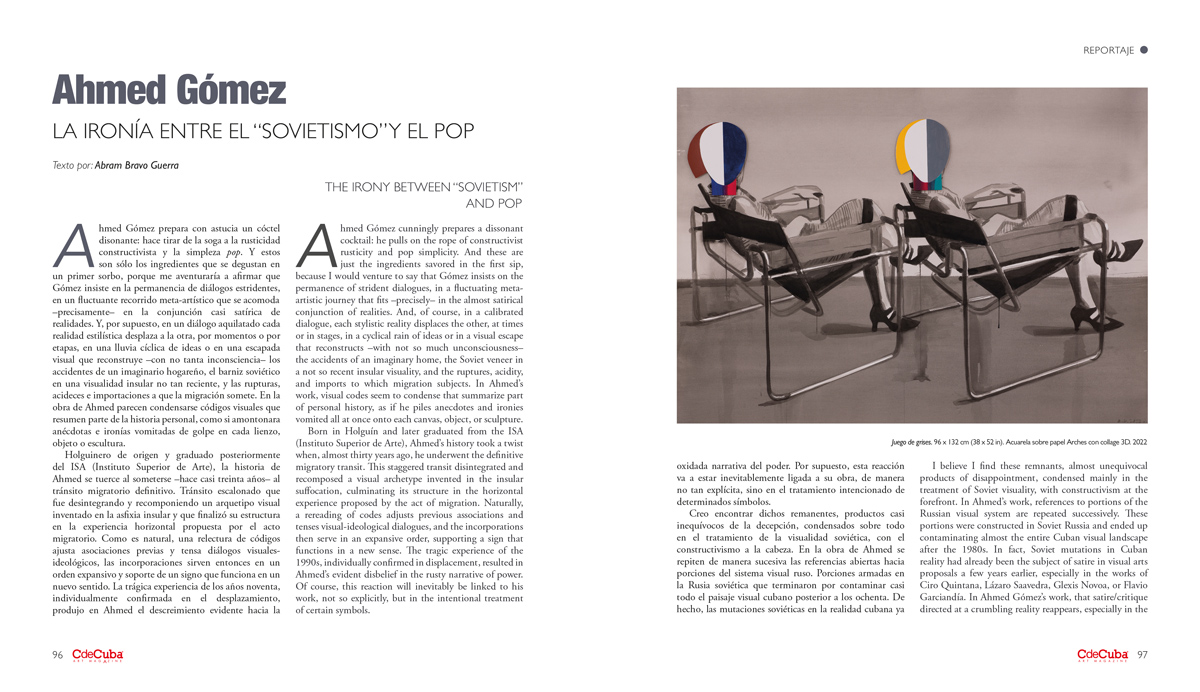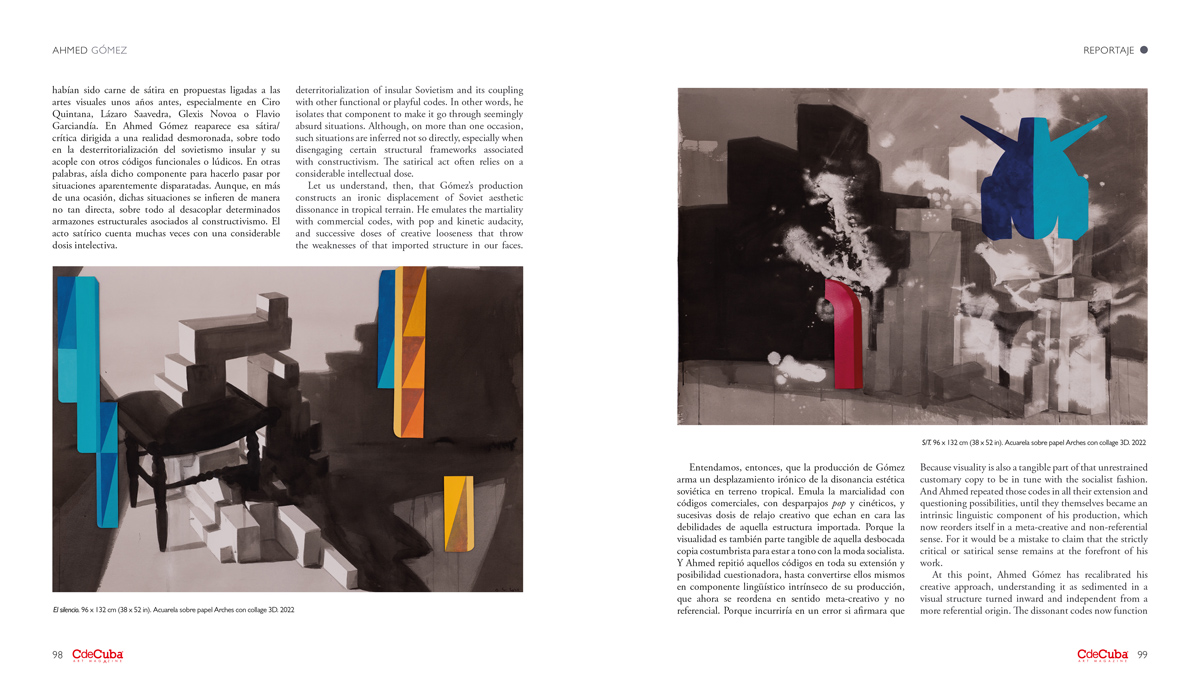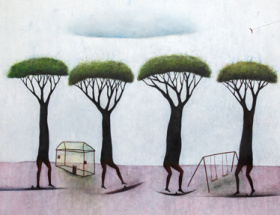The Irony Between “Sovietism” and Pop
By Abram Bravo Guerra
Ahmed Gómez cunningly prepares a dissonant cocktail: he pulls on the rope of constructivist rusticity and pop simplicity. And these are just the ingredients savored in the first sip, because I would venture to say that Gómez insists on the permanence of strident dialogues, in a fluctuating meta-artistic journey that fits –precisely– in the almost satirical conjunction of realities. And, of course, in a calibrated dialogue, each stylistic reality displaces the other, at times or in stages, in a cyclical rain of ideas or in a visual escape that reconstructs –with not so much unconsciousness– the accidents of an imaginary home, the Soviet veneer in a not so recent insular visuality, and the ruptures, acidity, and imports to which migration subjects. In Ahmed’s work, visual codes seem to condense that summarize part of personal history, as if he piles anecdotes and ironies vomited all at once onto each canvas, object, or sculpture.
Born in Holguín and later graduated from the ISA (Instituto Superior de Arte), Ahmed’s history took a twist when, almost thirty years ago, he underwent the definitive migratory transit. This staggered transit disintegrated and recomposed a visual archetype invented in the insular suffocation, culminating its structure in the horizontal experience proposed by the act of migration. Naturally, a rereading of codes adjusts previous associations and tenses visual-ideological dialogues, and the incorporations then serve in an expansive order, supporting a sign that functions in a new sense. The tragic experience of the 1990s, individually confirmed in displacement, resulted in Ahmed’s evident disbelief in the rusty narrative of power. Of course, this reaction will inevitably be linked to his work, not so explicitly, but in the intentional treatment of certain symbols.
I believe I find these remnants, almost unequivocal products of disappointment, condensed mainly in the treatment of Soviet visuality, with constructivism at the forefront. In Ahmed’s work, references to portions of the Russian visual system are repeated successively. These portions were constructed in Soviet Russia and ended up contaminating almost the entire Cuban visual landscape after the 1980s. In fact, Soviet mutations in Cuban reality had already been the subject of satire in visual arts proposals a few years earlier, especially in the works of Ciro Quintana, Lázaro Saavedra, Glexis Novoa, or Flavio Garciandía. In Ahmed Gómez’s work, that satire/critique directed at a crumbling reality reappears, especially in the deterritorialization of insular Sovietism and its coupling with other functional or playful codes. In other words, he isolates that component to make it go through seemingly absurd situations. Although, on more than one occasion, such situations are inferred not so directly, especially when disengaging certain structural frameworks associated with constructivism. The satirical act often relies on a considerable intellectual dose.
Let us understand, then, that Gómez’s production constructs an ironic displacement of Soviet aesthetic dissonance in tropical terrain. He emulates the martiality with commercial codes, with pop and kinetic audacity, and successive doses of creative looseness that throw the weaknesses of that imported structure in our faces. Because visuality is also a tangible part of that unrestrained customary copy to be in tune with the socialist fashion. And Ahmed repeated those codes in all their extension and questioning possibilities, until they themselves became an intrinsic linguistic component of his production, which now reorders itself in a meta-creative and non-referential sense. For it would be a mistake to claim that the strictly critical or satirical sense remains at the forefront of his work.
At this point, Ahmed Gómez has recalibrated his creative approach, understanding it as sedimented in a visual structure turned inward and independent from a more referential origin. The dissonant codes now function in an organic production line that anticipates them and plays with the factors to be engaged in dialogue. In this sense, he transitions from canvas to sculpture and object, maintaining the coexistence of Sovietisms, pop, abstraction, and advertising; now in a much more hermetic discursive order that, while not entirely abandoning criticism, seems to be organized around introspective language. And this language has extended to a multifaceted and multi-referential work that suggests its own associative map, no longer so dissonant according to itself. That apparent strident cocktail has become a balanced mixture, with whimsical yet organic tones.






